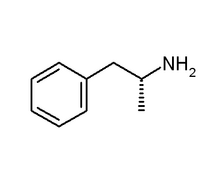The idea for this issue of CONNECTION began percolating a few years ago when I was visiting a doctoral class in higher education administration at Johnson & Wales University. I'd asked the aspiring college administrators which issues in academia they thought were being neglected by higher education journals and the mainstream media. One student lamented that so much ink is spilled on whether young people are ready for college academically, but hardly anyone pays attention to whether they are ready emotionally.
If this all sounded a bit soft for CONNECTION, it soon became clear that the topic has some very hard edges. Economists and psychologists increasingly recognize that emotional intelligences-the way people interpret and respond to social situations, how they handle criticism or failure, the way they deal with emotions, their own and those of others-are critical qualities in the postindustrial workplace. In fact, researchers in the field contend that one's emotional quotient or "EQ" is a much more accurate predictor of success in life than the more common IQ, and that organizations where emotional intelligence is nurtured see measurable improvements in performance. Moreover, one need only look at any organization's employee handbook to see that violence, substance abuse and sexual boundary-crossing are critical issues in today's workplace.
What then to make of New England's economic future when her college students respond to a Super Bowl or NCAA victory by torching the nearest car, when a large number of male students think the female word for "Yes" is "No" and when many students sink into depression and too many commit suicide?
The future "knowledge workers" of New England are a generation raised on WWF wrestling, "bring 'em on" presidential machismo and between 500 and 700 alcohol ads on TV per year. Four in 10 U.S. college students take psychoactive drugs such as Dexedrine, Prozac or Ritalin. Many of those students could not have made it to college without meds. But away from home, it's easy to forget to take them, or to abuse them, or to trade them with classmates.
All told, the range of social/emotional challenges facing college students-and, thereby, college administrators-does appear to constitute a regional human capital problem on the order of, say, lagging achievement in algebra.
The good news is that like algebra, emotional intelligence can be learned. Researchers have developed instruments to reliably measure EQ and college curricula to sharpen it-to help students adapt to change, work in teams, deal with adversity and so on.
College may come a bit late in the game to tackle the tougher student pathologies. But even these can be addressed with actions that go beyond American Council on Education General Counsel Sheldon E. Steinbach's recent deadpan advice to limit liability by "locking the bell tower and [locking] the prescription drugs in the athletic trainer's office. ..."
At MIT, where stressed-out students committed suicide at the rate of one per year during the 1990s, mental health services have been dramatically overhauled with special liaisons assigned to groups of students and unlimited outpatient psychotherapy visits made available. Dozens of colleges have signed up for a customized service called Ulifeline that provides online counseling for college students at risk of suicide.
Tufts University and the universities of Connecticut and Vermont, meanwhile, are among institutions that have received grants from the U.S. Justice Department in recent years under a Clinton administration initiative to address violence against women on college campuses.
To be sure, addressing student pathologies is also leading campus administrators into a brave new world. Some campuses are, in effect, deputizing networks of "peer educators" to deliver health messages in informal settings such as parties and sporting events. Before last winter's Super Bowl rioting, Northeastern University officials handed digital cameras to resident assistants. When the celebration went so badly, the university posted some of the photos on its web site to help identify the biggest troublemakers.
The emotional underdevelopment of college students will carry particularly highstakes, as the new economy relentlessly shifts jobs from place to place. And college administrators may find themselves in the ironic position of teaching students to be cool.
John O. Harney is executive editor of CONNECTION.
Copyright New England Board of Higher Education Summer 2004
Provided by ProQuest Information and Learning Company. All rights Reserved



